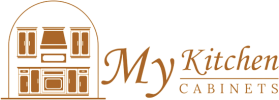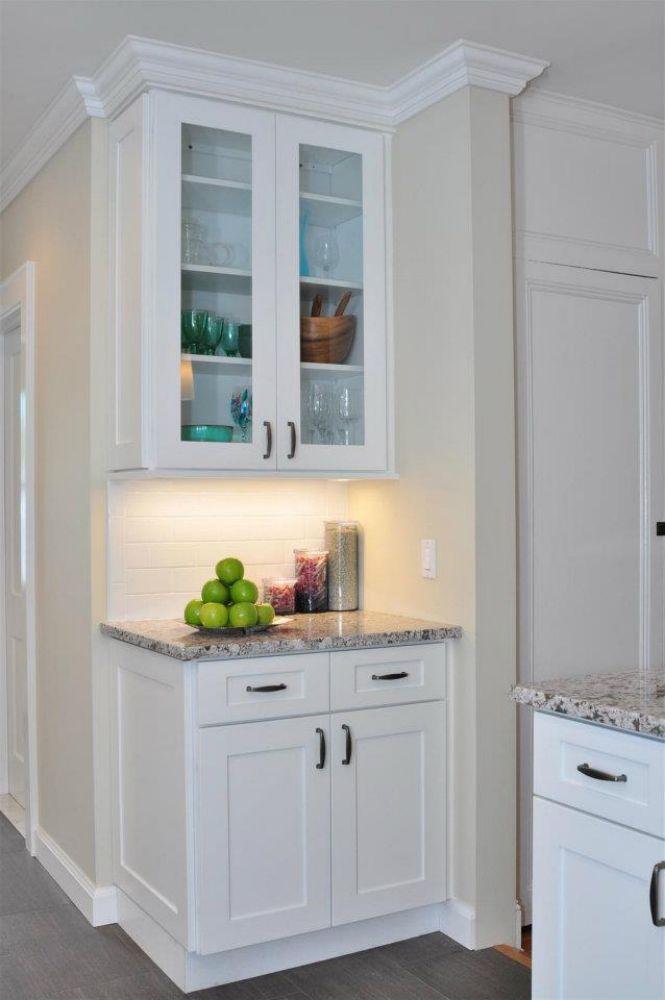Kitchen cabinets are central to both the function and beauty of a home. However, when you live in a region with high humidity, they require extra care to ensure they remain strong, durable, and visually appealing. Excess moisture in the air can lead to issues such as swelling, warping, mold, or peeling finishes. Fortunately, there are practical ways to maintain and protect your cabinets, even in the most challenging environments. This guide will walk you through how to properly care for your cabinets, extend their lifespan, and keep them looking fresh for years to come.
Understanding the Effects of Humidity on Kitchen Cabinets
High humidity impacts cabinets differently depending on the materials used. Wood is naturally porous, which means it absorbs and releases moisture. In humid conditions, it can expand, swell, or warp. Laminate and MDF (medium-density fiberboard) cabinets are also susceptible to damage such as delamination, bubbling, or softening if exposed to prolonged moisture.
Finishes and paints may peel or discolor due to constant dampness, while metal hardware can corrode over time. Without proper maintenance, these issues not only affect the look of your cabinets but also compromise their durability and functionality.
Choosing the Right Materials
One of the most effective ways to manage cabinets in a humid space is to start with the right materials. Solid hardwood, plywood, or marine-grade finishes offer more resilience than cheaper alternatives. Sealed or lacquered surfaces provide additional protection against moisture absorption.
If you’re remodeling, investing in higher-quality cabinets ensures they are better equipped to withstand environmental changes. For pet friendly households, durable finishes also resist scratches, stains, and wear, making them practical for busy kitchens.
Proper Ventilation for Your Kitchen
Humidity often builds up in kitchens due to cooking, dishwashing, and boiling water. Installing proper ventilation systems, such as range hoods or exhaust fans, helps reduce moisture in the air. Ensure that the ventilation leads outdoors rather than simply circulating air inside the room.
Additionally, dehumidifiers are helpful in extremely damp climates. Keeping humidity levels between 40% and 50% is ideal for protecting your cabinetry. Regular airflow also reduces the risk of mold growth, which thrives in warm, moist conditions.
Cleaning and Maintenance Tips
Regular cleaning is essential to prevent long-term damage. Here are some best practices:
-
Wipe Cabinets Frequently: Use a soft cloth to wipe down surfaces and remove condensation, especially around sinks, dishwashers, and stovetops.
-
Avoid Excess Water: Never leave wet cloths or sponges in contact with cabinets, as lingering moisture can damage finishes.
-
Use Gentle Cleaners: Avoid harsh chemicals that may strip protective coatings. A mild soap solution or wood-safe cleaner works best.
-
Dry Immediately: After cleaning, always dry cabinets thoroughly to avoid water seeping into seams or edges.
These simple habits go a long way toward preserving both the structural integrity and the beauty of your cabinets.
Protective Finishes and Sealants
Applying protective coatings is another way to safeguard cabinets from humidity. Water-resistant sealants, polyurethane finishes, and varnishes create a barrier that prevents moisture from penetrating the wood. Periodically reapplying these finishes enhances protection over time.
For laminate or veneer cabinets, sealing the edges with water-resistant strips helps prevent swelling. Using silicone caulking around sink bases, dishwashers, and other high-moisture zones also reduces the risk of water damage.
Preventing Mold and Mildew Growth
High humidity fosters mold and mildew, which not only damage cabinets but can also affect your family’s health. To prevent this:
-
Keep cabinets dry by wiping spills immediately.
-
Avoid overcrowding cabinets, as airflow is essential to prevent moisture buildup.
-
Place moisture absorbers such as silica gel packets, baking soda, or activated charcoal inside cabinets to regulate humidity.
-
Regularly inspect hidden areas, such as under sinks, for signs of mold.
By controlling moisture inside and around cabinets, you maintain both cleanliness and safety in your kitchen.
Seasonal Adjustments
Humidity levels fluctuate throughout the year. In summer, excess humidity is common, while winter air can be dry. These changes can cause wood cabinets to expand and contract, leading to cracks or gaps. Using a dehumidifier during summer and a humidifier in winter balances the environment, minimizing stress on your cabinets.
Seasonal maintenance—such as reapplying finishes or tightening hardware—helps your cabinets adjust to climate changes without permanent damage.
Long-Term Storage Practices
If you store food, cleaning products, or appliances inside cabinets, be mindful of moisture risks. Avoid placing hot appliances, like coffee makers, directly under overhead cabinets, as steam can rise and affect finishes. For food storage, use sealed containers to minimize humidity inside cabinet interiors.
Pet friendly households may also need to consider storing pet food carefully, as open bags can release moisture and attract pests. Ensuring your cabinets remain dry inside and out reduces the likelihood of damage and contamination.
Why Choose Us?
At My Kitchen Cabinets, we understand that your kitchen is one of the most important spaces in your home. Our cabinets are built with high-quality materials designed to withstand environmental challenges, including high humidity. We prioritize durability, functionality, and aesthetics, ensuring that your kitchen remains beautiful and practical for years to come.
Whether you’re looking for new kitchen cabinets or want advice on maintaining your current ones, our expertise helps you make the best choices. With thoughtful design, premium finishes, and long-lasting materials, we create cabinetry that adapts to your lifestyle and environment seamlessly.
Conclusion
Maintaining kitchen cabinets in a high-humidity environment requires a combination of proper ventilation, protective finishes, regular cleaning, and mindful storage practices. By addressing these factors, you not only extend the lifespan of your cabinets but also keep your kitchen safe, healthy, and visually appealing.
With the right care and preventive measures, your cabinets will continue to serve as both a functional and stylish part of your home, even in the most moisture-prone conditions.
Frequently Asked Questions
Q: How to maintain kitchen cabinets in a high-humidity environment?
A: The best approach involves proper ventilation, frequent cleaning, protective finishes, and dehumidifiers to keep moisture levels stable. Sealing cabinet edges and using moisture absorbers inside can also help prevent swelling, warping, or mold growth.
Q: What cleaning products are safe for cabinets in humid areas?
A: Mild soap and water or wood-safe cleaners are best. Avoid harsh chemicals or abrasives, which can strip finishes. Always dry cabinets immediately after cleaning.
Q: Can protective coatings prevent humidity damage?
A: Yes, sealants such as polyurethane or varnish add a protective layer against moisture. Reapplying coatings periodically ensures lasting protection.
Q: How does humidity affect different cabinet materials?
A: Wood cabinets may expand or warp, MDF can swell, and laminates may bubble or peel. Choosing high-quality, sealed materials helps reduce these risks.
Q: Is mold growth common in kitchen cabinets?
A: In humid environments, yes. Mold thrives in moisture-rich conditions. Preventing it requires regular cleaning, proper ventilation, and moisture control inside cabinets.

